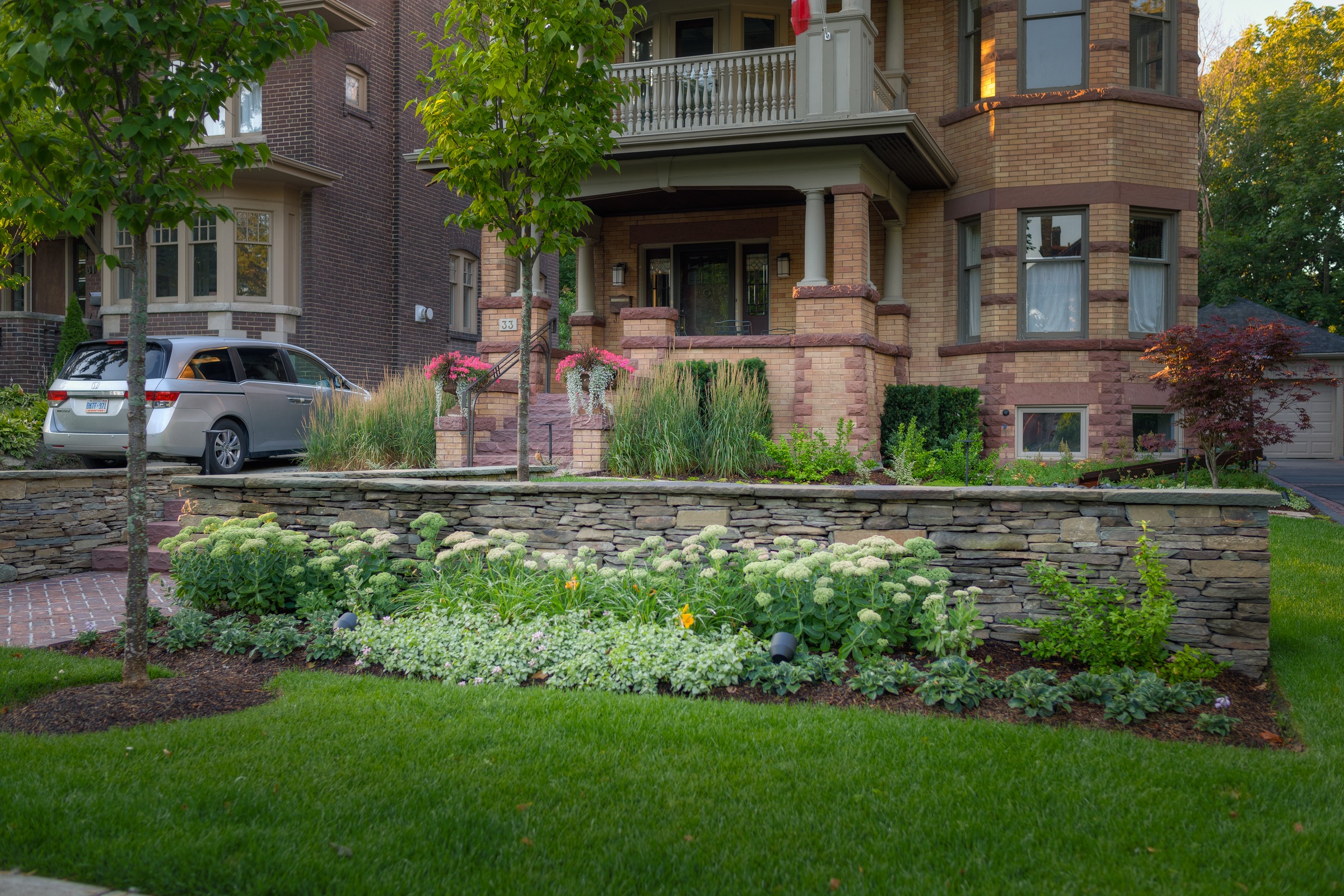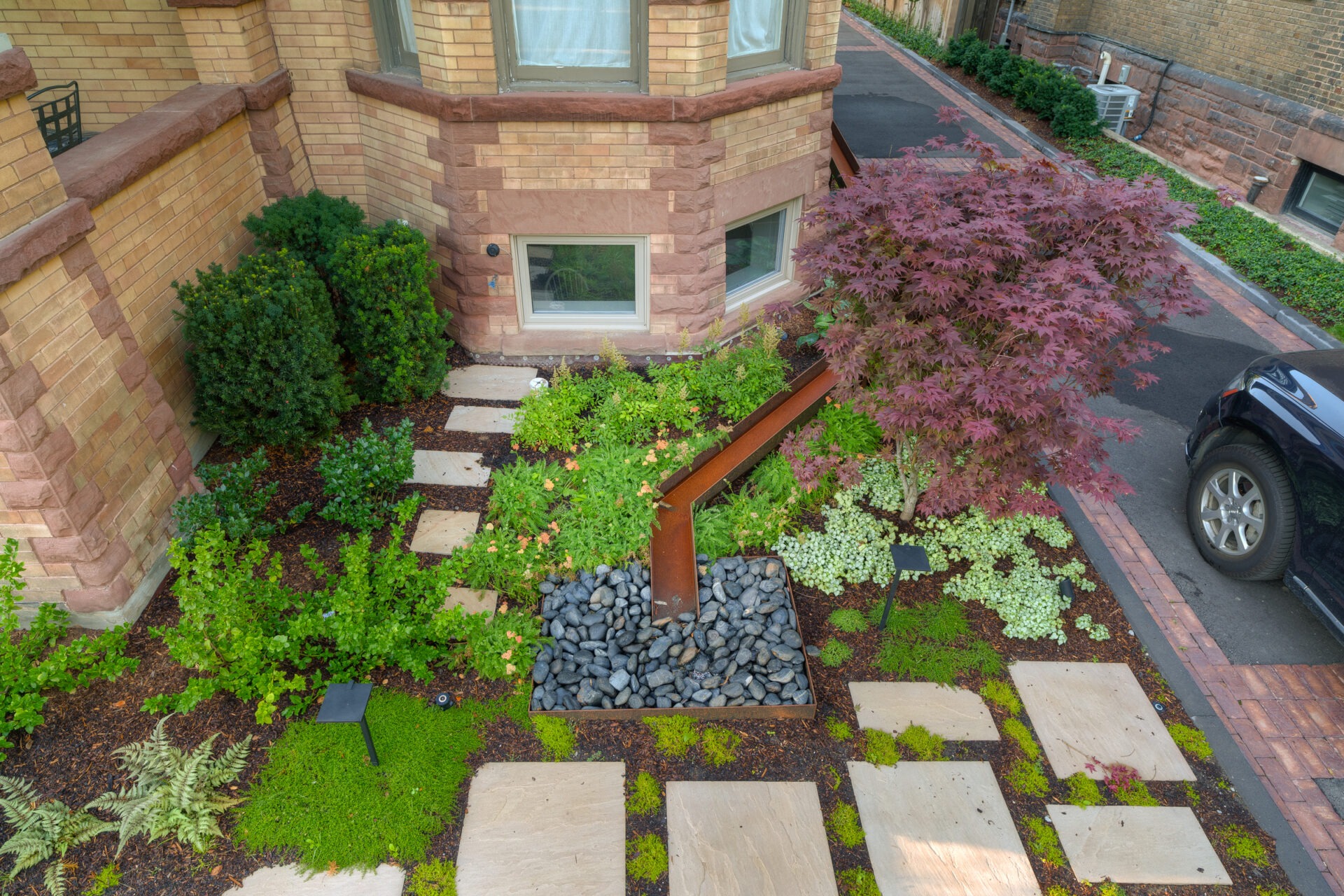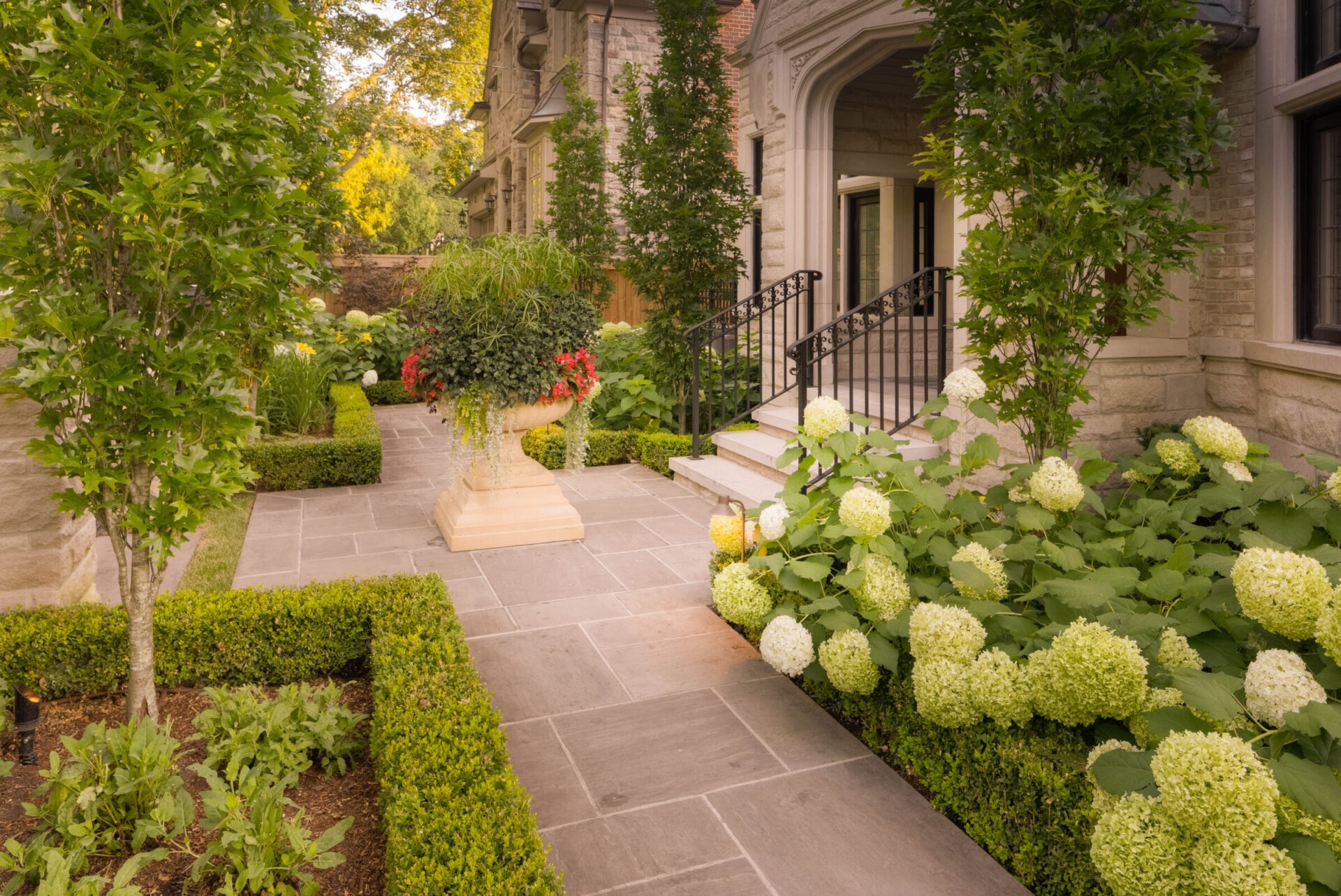What Do Landscapers Do? A Complete Guide to Landscaping Services

Landscaping is an art. It’s a profession that combines creativity, knowledge, and physical work.
But what do landscapers do exactly?
Landscaping is a multifaceted profession that blends artistry, expertise, and hard work. It involves the design, creation, and upkeep of outdoor spaces like gardens, parks, and other areas, enhancing both their beauty and functionality.
Landscapers play a pivotal role in shaping our environment. They are the architects of outdoor spaces, working on residential, commercial, and public projects. Their responsibilities extend beyond simply planting flowers and trimming trees; they also install irrigation systems, construct patios, and ensure the overall health and sustainability of the landscape.
Landscaping requires a deep understanding of both art and science. Landscapers must possess knowledge of local climate and soil conditions, and select plants that will thrive in the given environment. They also need to consider practical aspects such as water usage and long-term maintenance. Additionally, they must manage budgets, resources, and timelines, and effectively communicate with clients to meet their expectations.
The role of a landscaper can vary significantly. Some specialize in design, while others focus on maintenance. Some work on small residential projects, while others take on large commercial endeavors. Landscape architects, on the other hand, typically work on larger-scale projects that demand a deeper understanding of design principles and environmental systems.
This comprehensive guide will provide valuable insights into the world of landscaping. We will explore the diverse roles, services, and skills involved in this profession, and answer common questions to help you gain a thorough understanding of what landscapers do.
The Basics

Landscaping transforms spaces, blending beauty with functionality. It’s much more than just planting flowers or mowing lawns. The expertise of a landscaper can breathe life into dull spaces, creating thriving ecosystems and enjoyable spaces for people to unwind.
At its core, landscaping involves planning, designing, and maintaining outdoor spaces. These spaces can range from small residential gardens to vast public parks. Landscaping incorporates a variety of elements, such as plant selection, hardscaping, water management, and ecological sustainability. Each task requires specific skills and knowledge, ensuring that the landscape is both appealing and sustainable.
The world of landscaping is diverse, with professionals taking on various roles and responsibilities. Whether it’s a landscape architect orchestrating a large urban green space or a landscape contractor managing the installation of landscape elements, each professional contributes unique skills. Here are some of the components landscapers handle:
- Design and Planning: Conceptualizing layouts, choosing materials, and planning plantings.
- Installation: Setting up features like patios, walkways, and irrigation systems.
- Maintenance: Regular care including pruning, fertilizing, and seasonal clean-up.
- Environmental Care: Sustainable practices, like xeriscaping and using native plants.
Landscaping not only enhances the visual appeal but also contributes to property value and environmental health. By understanding the detailed work landscapers do, you can better appreciate the integration of art and science in creating vibrant outdoor spaces. In this guide, we’ll dive deeper into the roles, skills, and benefits landscapers bring to life.
The Landscape Process

Landscapers are the architects of the outdoors. Their work revolves around designing, building, and maintaining outdoor environments. By merging art with nature, they create spaces that are both functional and beautiful.
Site Assesments & Design
One of the primary tasks landscapers undertake is site assessment. This involves evaluating soil conditions, local climate, and existing vegetation. With this information, they plan a landscape that fits the environment. This step is crucial in ensuring the longevity and sustainability of a landscape project.
Hardscaping & Construction
Once a plan is in place, landscapers move to the construction phase. This often involves installing hardscape elements like patios, walkways, and fences. These features form the backbone of a landscape, providing structure and form to the natural elements that will follow. The precision required in this stage demands technical skills, as landscapers must ensure everything fits and functions correctly.
Planting
After hardscaping comes the artful task of planting. Landscapers select plants that will thrive in the given conditions. They must consider growth patterns, color schemes, and maintenance needs. This task is complex, requiring both scientific and creative insight. Plantings are arranged not only for immediate aesthetic appeal but also for future growth and change.
Landscape Maintenance
Maintenance is a significant aspect of a landscaper’s work. This involves regular tasks like mowing, weeding, and pruning. Seasonal changes demand adjustments in care; for example, spring might involve fertilizing and planting annuals, while autumn could require leaf clearing and pruning. Consistent maintenance keeps the landscape healthy, avoiding overgrowth and ensuring every plant thrives.
Sustainability is becoming a key focus in modern landscaping. Landscapers are adapting practices to conserve water and promote ecological balance. This includes installing efficient irrigation systems and choosing drought-tolerant plant varieties. The integration of sustainable practices not only helps the environment but also reduces maintenance costs and effort.
The work of a landscaper is varied and essential. It blends creative design with practical implementation and continuous care. The result is a harmonious outdoor space that delights the senses and supports the environment. Landscapers ensure these spaces remain beautiful and functional for years to come.
Key Skills for Landscape Designers

Landscape designers transform outdoor spaces with artistry and skill. To succeed, they must excel in various disciplines. Their expertise ensures that each project is both beautiful and functional.
Creativity is at the heart of landscape design. Designers envision unique layouts that harmonize with nature. They often transform an ordinary yard into an inspiring retreat. This creative vision is essential for crafting spaces that are not only usable but also enjoyable.
Communication skills play a crucial role in this profession. Designers work closely with clients to understand their vision and preferences. They translate these ideas into actionable plans. Effective communication ensures that client expectations align with the final outcome.
Technical skills are indispensable for landscape designers. Proficiency in design software allows them to create detailed plans and visuals. These skills help convey their ideas to clients and team members. They ensure that every detail is communicated and understood.
Knowledge of plants and horticulture is vital. Designers need to know which plants will thrive in specific conditions. Understanding growth patterns and maintenance needs is crucial for long-lasting landscapes. This knowledge ensures that plant selections match the environment and client desires.
Project management abilities are also essential. Designers often oversee the entire project from conception to completion. They must manage budgets, timelines, and resources effectively. Coordination among contractors, clients, and suppliers is a part of their regular responsibilities.
Key Skills for Landscape Designers:
- Creativity and artistic vision
- Strong communication and interpersonal abilities
- Proficiency with design software
- Deep knowledge of plants and horticulture
- Excellent project management and organizational skills
By leveraging these skills, landscape designers create captivating outdoor spaces. Each project is a unique testament to their expertise and passion. With the right mix of creativity and technical know-how, designers breathe life into their creations. Their work elevates any landscape, offering beauty and utility in equal measure.
Educational Background of Landscapers

To become a successful landscaper, education and training play pivotal roles. While formal education provides a solid foundation, practical experience is invaluable.
Many landscapers start with a degree in horticulture or landscape architecture. These programs cover plant biology, design principles, and environmental systems. A degree can open doors to advanced positions and specialized roles.
Certification programs are widely available for those looking to boost their credentials. Organizations offer certifications that focus on specific aspects of landscaping. These programs often cover topics like irrigation systems and sustainable practices. They provide landscapers with specialized skills that are highly marketable.
Apprenticeships and on-the-job training are crucial paths into the field. They provide practical experience that classroom settings can’t replicate. Working under experienced professionals, budding landscapers learn crucial skills and techniques. Hands-on learning helps them understand real-world applications of their studies.
Educational Pathways for Aspiring Landscapers:
- Degree in Horticulture or Landscape Architecture
- Certification programs focusing on specific skills
- Apprenticeships and practical on-the-job training
- Continuing education and skill enhancement workshops
Continued learning is also essential in this evolving field. Landscapers must stay updated on industry trends and new technologies. Workshops and courses help professionals refine their craft and keep up with changes. This commitment to learning helps landscapers remain competitive and effective.
While a formal degree isn’t always a necessity, it offers a strong grounding in the essentials. However, it is the blend of education, certification, and practical experience that truly prepares someone for the diverse challenges of landscaping. Whether through academic or hands-on routes, aspiring landscapers have multiple paths to develop their knowledge and skills, enabling them to excel in this rewarding field.
Role of a Landscape Contractor

Landscape contractors play a crucial part in transforming plans into reality. They oversee the practical side of landscaping projects and ensure seamless execution. From small garden updates to large-scale commercial developments, their role is vital.
Firstly, a landscape contractor manages the entire project timeline. This involves coordinating with various team members and subcontractors. They organize resources effectively, ensuring that materials and labor are available as needed. Efficient project management helps to keep everything on schedule and within budget.
Secondly, they implement the designs created by landscape architects or designers. This process includes installing features such as patios, walkways, and water systems. Precision is key, as even small errors can impact the entire landscape. Contractors must adhere to design specifications and safety standards rigorously.
Moreover, they are often responsible for sourcing quality materials. This includes selecting plants, choosing stones for pathways, and more. Each choice impacts the project’s final look and durability. Their expertise ensures the use of appropriate materials that complement the landscape’s design and function.
Communication is another essential part of their role. Contractors are the bridge between the client, the designers, and the installation team. They must convey ideas and updates clearly and concisely. This ensures everyone is on the same page, minimizing misunderstandings and delays.
Key Responsibilities of a Landscape Contractor:
- Project management and scheduling
- Implementation of design plans
- Sourcing and selection of materials
- Communication with clients and teams
- Adherence to safety and quality standards
Lastly, they handle any obstacles that arise during construction. This might involve dealing with unforeseen site issues or weather delays. Problem-solving skills are crucial, allowing contractors to adjust plans on the fly. Their ability to manage these challenges ensures projects progress smoothly and meet client expectations.
In summary, landscape contractors oversee the crucial transition from design to completed landscape. Their meticulous approach and expertise in managing various elements of the project ensure the vision is brought to life with precision and quality. Their role is indispensable in achieving a successful landscaping outcome, meeting both aesthetic and functional goals.
Design and Construction in Landscaping

Designing a landscape involves both creativity and functionality. It starts with understanding the client’s vision and the site’s potential. Landscape designers work to create spaces that are both beautiful and usable. This process requires careful planning and consideration of various factors.
Key elements of design include layout, plant selection, and hardscaping features. Designers must consider the existing environment, such as soil type and sunlight. This ensures that chosen plants will thrive and complement the overall aesthetic. They also work to incorporate the client’s preferences, ensuring the space feels personal and inviting.
Construction brings these design plans to life. This phase involves the physical work needed to reshape the land according to the blueprint. It often includes grading the land, which involves leveling and preparing the site. Proper grading is essential for effective drainage and a stable foundation for plants and structures.
In addition to softscaping with plants, hardscaping is a significant aspect of construction. This includes building structures such as decks, retaining walls, and pathways. Each feature adds functionality and visual interest to the landscape. Skilled craftsmanship is essential to ensure durability and safety in these constructions.
Important Aspects of Landscaping Design and Construction:
- Assessment and planning of site conditions
- Selection of plants and materials suitable for the environment
- Integration of hardscaping elements like patios and paths
- Customization to meet the client’s personal style
- Ensuring sustainable and functional designs
Finally, sustainability plays a crucial role in modern landscape design. Designers incorporate eco-friendly practices like using native plants and creating efficient irrigation systems. This approach not only benefits the environment but also reduces long-term maintenance for the homeowner. A well-designed landscape harmonizes with nature, providing lasting enjoyment and value.
Design and construction in landscaping are intertwined processes. They turn concepts into tangible, enjoyable spaces. Successful landscaping combines aesthetic appeal with practical solutions, resulting in outdoor areas that enhance the quality of life. The right balance of design and construction can create a landscape that stands the test of time and resonates with its users.
Landscape Architects
Landscape architects are specialized professionals who focus on the larger-scale planning and design of outdoor spaces. They often work on projects that require a comprehensive understanding of environmental systems, urban planning, and community needs. Their role involves not only creating aesthetically pleasing designs but also ensuring that these designs are functional and sustainable. Landscape architects conduct extensive site analyses, considering factors such as topography, climate, and existing ecosystems. They collaborate with engineers, architects, and urban planners to integrate their designs into broader development projects. By balancing creativity with technical knowledge, landscape architects play a crucial role in shaping public parks, commercial landscapes, and residential developments, ultimately enhancing the quality of life in communities.
What Is Landscape Horticulture?

Landscape horticulture is the art and science of cultivating plants to create attractive outdoor spaces. It plays a vital role in developing aesthetically pleasing and functional landscapes. This discipline focuses on the use of plants as living materials to enhance exterior environments. It combines knowledge of plant biology with design principles to produce sustainable and lively landscapes.
Professionals in this field are responsible for the selection, planting, and maintenance of different plant species. They ensure that the chosen plants are well-suited to their environment and can thrive. This involves understanding soil types, climate conditions, and the specific needs of each plant. Their expertise helps in maintaining the overall health and beauty of a landscape.
An essential aspect of landscape horticulture is its contribution to biodiversity and ecological balance. By selecting native plants and promoting diverse plantings, horticulturists support local wildlife. They also encourage practices that reduce environmental impact, such as using organic fertilizers and implementing water-efficient strategies. Sustainable landscape practices benefit both the environment and the community.
Key Areas of Landscape Horticulture:
- Plant selection and placement according to environment
- Soil analysis and improvement for plant health
- Maintenance of plant care, including pruning and fertilization
- Management of pests and plant diseases
- Promotion of biodiversity through native plantings
The fusion of creativity with scientific knowledge makes landscape horticulture a dynamic field. Professionals continuously adapt to evolving environmental conditions and trends. Their work transforms ordinary spaces into vibrant, thriving landscapes that offer aesthetic and ecological benefits. Through landscape horticulture, plants are more than just decorations; they are integral components of well-designed outdoor spaces.
Landscape Maintenance Services

Landscape maintenance is a critical aspect of ensuring that outdoor spaces remain healthy and visually appealing over time. This involves a variety of tasks, including regular mowing, pruning, fertilizing, and pest management. Landscapers must also be attentive to seasonal changes, adjusting their maintenance routines to accommodate the specific needs of plants throughout the year. For instance, spring may require more intensive planting and fertilization, while fall often focuses on leaf removal and preparing plants for winter. Additionally, landscape maintenance includes monitoring the overall health of the plants and soil, making necessary adjustments to irrigation systems, and implementing sustainable practices to promote long-term ecological balance. By prioritizing maintenance, landscapers help preserve the beauty and functionality of outdoor spaces, ensuring they continue to thrive for years to come.
FAQs
What are the main duties of a landscape contractor?
Landscape contractors are responsible for transforming designs into reality. Their work involves planning and overseeing the construction of various landscape elements. These professionals handle everything from negotiating contracts to managing the workforce and materials. They ensure projects stay on track, meeting deadlines and budget requirements.
The duties of a landscape contractor are diverse. They include:
- Project management and planning.
- Coordination of installation work.
- Managing labour and equipment resources.
- Ensuring compliance with safety and environmental standards.
- Communicating progress and updates with clients.
Effective management and communication are crucial for landscape contractors to successfully fulfill their responsibilities.
What skills are needed to be a landscape designer?
Landscape designers need a blend of creativity and technical skills. They must visualize stunning outdoor spaces while considering practical factors like climate and site conditions. Proficiency in design software and hand-drawing abilities also enhance their creative process. Strong problem-solving skills are vital for adapting designs to meet client needs and environmental constraints.
Essential skills for landscape designers include:
- Creativity and artistic talent.
- Understanding of plant types and growing conditions.
- Proficiency in design and modeling software.
- Communication skills for client interaction.
- Ability to work collaboratively with other professionals.
These skills help landscape designers create functional and aesthetically pleasing outdoor environments.
What degree do you need to be a landscaper?
While a degree is not always necessary, a formal education can be beneficial. Many landscapers pursue degrees in horticulture, landscape architecture, or related fields. These programs offer knowledge of plant science, landscape design, and soil management. Additionally, hands-on labs and projects help build practical skills.
Common degree paths for landscapers include:
- Horticulture
- Landscape Architecture
- Environmental Design
- Botany
Complementary courses in business or project management can also be valuable. The right educational background helps landscapers advance their careers and deliver high-quality work.
Summary

Landscaping is an intricate blend of creativity, science, and practical skills. It transforms ordinary spaces into beautiful and functional environments. Landscapers play a vital role in shaping these spaces to enhance aesthetic appeal and usability. They ensure that gardens, parks, and public spaces remain vibrant and healthy.
Understanding the diverse roles within landscaping highlights the industry’s complexity. From landscape architects to contractors, each professional brings unique expertise. This collaboration ensures that design visions become beautiful realities. Additionally, the industry’s growing focus on sustainability and innovation aligns well with today’s environmental priorities.
The future of landscaping promises exciting opportunities for innovation and growth. Key highlights from the landscaping field include:
- Diverse roles requiring various skills and expertise.
- Significant contribution to environmental sustainability.
- Enhancing property value and community living spaces.
- Increasing importance of technology and sustainable practices.
Start Your Landscaping Journey with a Consultation
Transforming your outdoor space starts with the right plan—and the right team. Whether you’re looking for a full landscape design, custom stonework, garden enhancements, or ongoing maintenance, Allweather Landscape is here to help.
Our expert team will guide you through every step, ensuring a seamless process that brings your vision to life. Ready to discuss your landscaping goals?
Book a Consultation and take the first step toward an outdoor space you’ll love for years to come.
Tags:
